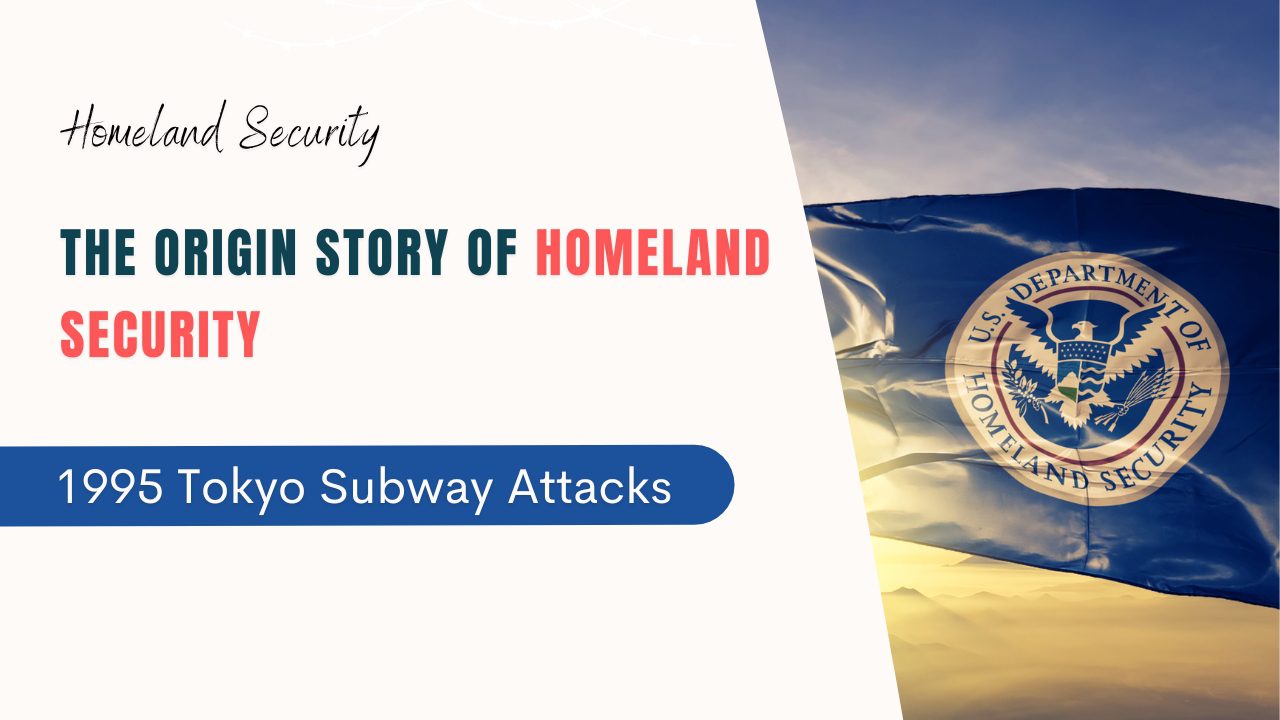In this article i am gone to share The Origin Story of Homeland Security & the 1995 Tokyo Subway Attacks with you..
The Origin Story of Homeland Security
Most people think that homeland security came about as a result of September 11, 2001 attacks on the World Trade Center and the Pentagon. That is not the case. Concern for homeland security began six years earlier, and was prompted by events that happened not in the United States, but in Japan.
1995 Tokyo Subway Attacks
On the morning of March 20, 1995, five members of a quasi-religious cult, Aum Shinrikyo, entered the Tokyo subway system and boarded separate trains bound for the city center, the seat of Japanese government. The cult members were indistinct from thousands of other commuters, except the umbrellas they carried had sharpened tips. They also carried two concealed plastic bags filled with liquid sarin.
What is Sarin ??
Sarin is an odorless, colorless liquid that quickly vaporizes when exposed to air. It is a nerve agent, developed as a pesticide in 1938. Highly potent, a single drop can kill a grown adult.
As the trains drew near the city center, the cult members dropped their bags to the floor and punctured them with their umbrellas. As the sarin started vaporizing, passengers within the packed cars began to fall sick.
Victims would later report feeling nauseous and having blurred vision. As the trains pulled into the next station, passengers rushed out of the cars, unwittingly spreading the agent onto the platform. Soon, waiting commuters also began feeling the effects and started pushing towards the station exits. Some collapsed on the platform before they could make it. Seeing the pandemonium, subway agents ordered all trains stopped, but not before thousands were exposed. Hundreds collapsed outside the station entrances.
Over 5000 victims made their way to hospitals, overwhelming staff who were unsure what was happening. Miraculously, most victims survived. Unfortunately, 12 did not.
Experts believe thousands more could’ve died.
Japanese police traced the attacks back to the cult leader, Shibuyu Asahara. He staged the attacks to bring down the Japanese government and hasten a prophesied global apocalypse, from which he would emerge as emperor.
After a lengthy trial, Asahara was convicted of murder and sentenced to death, together with 12 other cult members.
While the Japanese were justifiably horrified by the incident, security experts around the world also felt a chill. It was the first employment of the weapon of mass destruction by a non-state actor. Until this incident, WMD ( Weapons of Mass Destruction ) were thought to require the resources of a nation state to develop or acquire. Aum Shinrikyo had done it on their own, without support or knowledge of any government. Read more in depth by goverment article
The national security implications for the United States were profound.
The entire security apparatus, consisting of the military, diplomatic, and economic arms of the federal government were designed to protect the United States and uphold its interests among the nations of the world. The United States security apparatus was not designed to deal with rogue groups, foreign or domestic, capable and intent on employing WMD within US territory.
Overnight, the potential number of hostile threats to the nation multiplied by hundreds, maybe thousands. As if to underscore this concern,
April 19th, 1995 / Oklahoma City truck bomb attack
on April 19th, 1995, only a month after the Tokyo subway attacks, a truck bomb detonated outside the Alfred P Murrah Federal Building in downtown Oklahoma City killed 168 people. The incident convinced many that the threat of WMD attack against the United States by rogue agents was real.
In response, President Clinton issued Presidential Decision Directive number 39 in June, 1995, designating the FBI as the lead federal agency to coordinate federal efforts to prevent and respond to WMD attack against the United States by non-state actors. But Congress was uncertain this action was sufficient.
Protecting the United States from WMD attack by rogue agents would require unprecedented levels of coordination, for which the federal government was not well known. Acting on this concern, Congress commissioned two separate panels to investigate the matter and report their recommendations forthwith.
In December, 2000, the Gilmore Commission confirmed that coordination within the federal government was insufficient, and recommended that the next president establish a national office for combating terrorism.
In February, 2001, the Hart-Rudman Commission agreed that the federal government was unprepared for domestic WMD attack.
They recommended creating a national homeland security agency. And so it was that in April, 2001, Representative William Thornberry introduced House Resolution 1158 to create a national homeland security agency. And so it was that legislation to create a national homeland security agency sat in Congress when New York and Washington, DC were attacked on 9/11.
U.S. Department of Homeland Security Founded on – 25 November 2002

